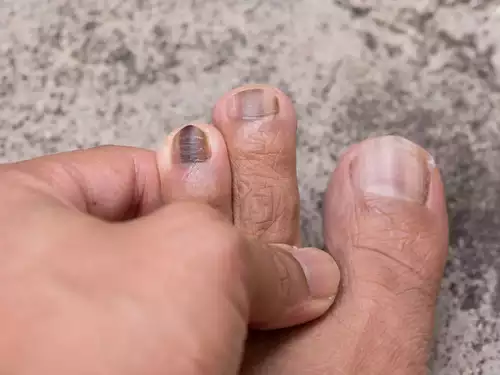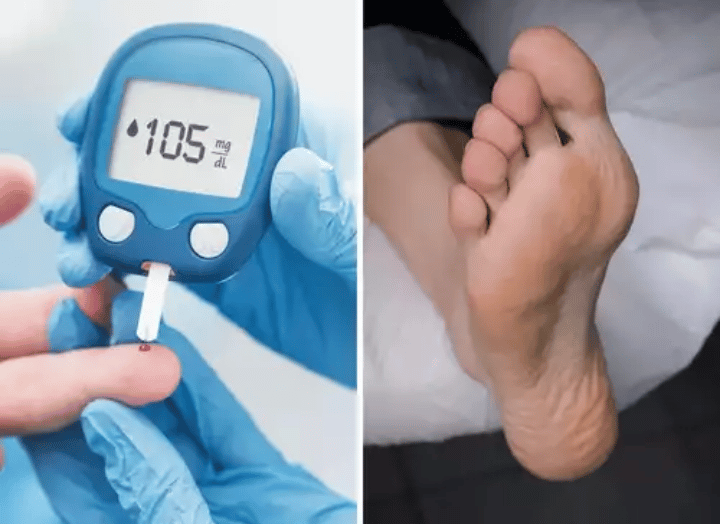Diabetes In Your Feet: Seven Signs That Indicate High Blood Sugar Levels
How diabetes affects your foot
Diabetes is a chronic illness that affects how your body processes and uses glucose from the food you eat. It either occurs when the pancreas are unable to produce enough insulin or when the body cannot effectively utilize the insulin it produces.
Different types of diabetes can affect the body including Type 1, Type 2 diabetes, prediabetes and gestational diabetes. However, they all share the common problem of having too much glucose in the bloodstream.
Having said that, diabetes can also cause two types of problems in the foot namely diabetic neuropathy and peripheral vascular disease.
In diabetic neuropathy, uncontrolled diabetes can affect and damage your nerves, whereas peripheral vascular disease also affects the flow of blood, leading to several symptoms that arise in the feet itself.

What causes diabetic neuropathy?
While there is known cause of diabetic neuropathy, researchers believe uncontrolled blood sugar levels can negative impact and damage the nerves, interfering with their ability to send signals, as per the Mayo Clinic. It is also said that high blood sugar levels can also damage the blood vessels, making it difficult for the oxygen and nutrients to pass efficiently.

Pain, tingling and numbness in legs and feet
Diabetic neuropathy is a type of nerve damage that can occur in people with diabetes. According to the Mayo Clinic, diabetic neuropathy most often damages nerves in the legs and feet, which is why symptoms include pain and numbness in the legs, feet and hands. Furthermore, it can cause problems with the digestive system, urinary tract, blood vessels and heart. While some people only suffer with mild symptoms, there are those whose symptoms can be quite painful and debilitating.
Foot ulcers
Generally, a foot ulcer is characterized by a break in the skin or a deep sore.
A diabetic foot ulcer is an open wound that is prevalent in approximately 15 percent of patients with diabetes, and is primarily found on the bottom of the foot. In mild cases, foot ulcers can cause the skin to wear off, however, in severe cases, it can lead to amputation. According to experts, the key is to reduce your risk of diabetes from early on.
Athlete’s foot
Nerve damage due to diabetes can also increase one’s chances of developing foot complications including athlete’s foot.
Diabetic neuropathy is a type of nerve damage that can occur in people with diabetes. According to the Mayo Clinic, diabetic neuropathy most often damages nerves in the legs and feet, which is why symptoms include pain and numbness in the legs, feet and hands. Furthermore, it can cause problems with the digestive system, urinary tract, blood vessels and heart. While some people only suffer with mild symptoms, there are those whose symptoms can be quite painful and debilitating.
Athlete’s foot is a fungal infection that leads to itching, redness, and cracking. It can affect one or both feet and will likely require medications that eliminate the fungus causing the infection.

Corns or calluses
Diabetes can also cause corns and calluses.
While a corn is a buildup of hard skin near a bony area of a toe or between toes, a callus is the buildup of hard skin on the underside of the foot, as per the WebMD.
Calluses are usually caused by poorly fitting shoes or by a skin issue, whereas corns are an outcome of pressure from shoes that rub against your toes or cause friction between your toes.

Fungal infection of nails
People with diabetes are also at an increased risk of a fungal infection called onychomycosis, which usually affects the toenails. This leads to discoloured (yellowish-brown or opaque), thick, and brittle nails. While in some cases the nail can separate itself from other nails, in other instances, the nail may crumble. Fungal infection in the nail can also occur from an injury.

Gangrene
Because diabetes affects the blood vessels that supply your fingers and toes with blood and oxygen, it can lead to gangrene. Gangrene occurs when the blood flow is cut off and tissue dies off. This may even increase the chances of an amputation.

Foot deformities
Given that diabetes can cause nerve damage, it can also weaken the muscles in the feet and lead to problems like hammertoes, claw feet, prominent metatarsal heads, and pes cavus, which is a high arch that won’t settle down even when you put some weight on it.

